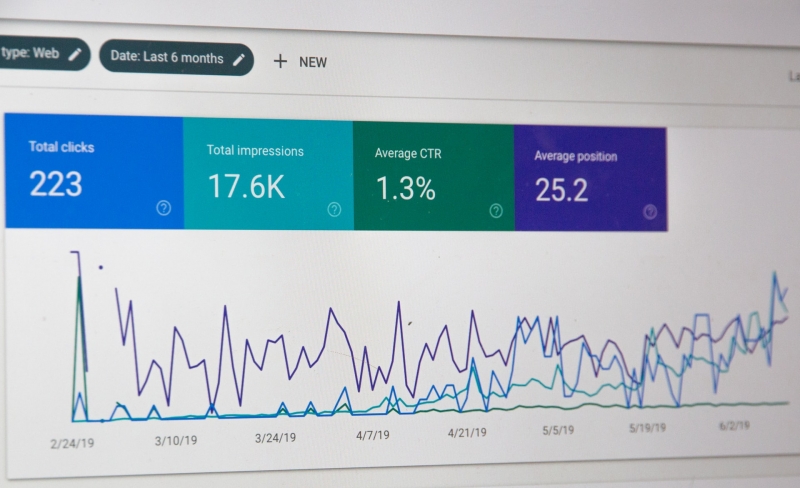PRHK Viewpoints: How to navigate the data at your fingertips to shape communications strategy
Historically, proving the ROI for a corporate communications strategy has been a challenge for PR teams. When I started in this industry, the most commonly used metric, the advertising equivalent dollar value (AVE), gave us an inflated value figure to impress the financially minded senior decision makers amongst our clients, but was not a true reflection of the results.
Evaluation models have moved on and we now have highly sophisticated tools offering a myriad of data to analyse. But now, it is a case of too much data. Many brands have data at their fingertips but are still in the dark about the metrics that matter. They have never been more informed, but with that comes increased levels of confusion. What to measure? What to ignore? And crucially: how to interpret that data to make informed decisions? Numbers can only take you so far; it is the analysis and resulting insights, that lead to strategic action.
The kinds of data matter
There is no one-size-fits-all approach. What matters deeply to one brand may be irrelevant to another. Good data analysis will selectively and strategically draw on multiple sources of truth. This may include:
- social data from active listening
- media coverage
- website data from Google Analytics and heat mapping
- SEO data – backlinks, ranking reports for keywords
- advertising metrics, both digital and traditional
- engagement scores from social media
- customer data
- sales data
- focus group insight
- third party research (or internally commissioned research)
- employee engagement reports
- feedback from sales teams
- CRM data
It is a lot. Combine this with numerous options for SaaS tools that deliver the data in seemingly endless — but pretty — slides of bar charts, pie graphs and indices, and you can see how easily it becomes overwhelming. Investing in these costly analysis tools is only worthwhile if you have the bandwidth and capability to use them properly, with clear objectives in mind.
Reconciling data from various sources and in differing formats to deliver a single point of truth is challenging. Particularly when individuals across the business have access to different data sources. Who owns it internally? Who pulls it together? How are actionable insights uncovered for the communications team? Often, it goes in the too-hard basket and leads to missed opportunities.
Identifying blind spots
Quality insight-led communication is not about telling us what we already know. It is about investigating and building on the areas where there is lack of clarity. You do not need another report saying you are “strong in X, but weak in Y” if there are already mountains of data pointing to that insight. But to produce a clearer picture of what is taking place in the broader marketplace requires a strategic focus to identify those blind spots and determine what additional data points are needed to be uncovered or interrogated. Typically, we recommend drilling down into three or four actionable insights that can form the strategic themes for a powerful and effective communications program — taking on too much often leaves little room for decisive action.
Perception versus reality
We see many brands relying on gut feel and instinct when it comes to assessing how they are regarded in their marketplace, or amongst their key audiences. While it may be comforting for a Board to feel that they are the leaders in their space, the data can prove them wrong (or perhaps right). But a modern market leader should ultimately expect themselves to benchmark against measures such as:
- ranking number one in Google searches for relevant keywords
- click throughs to key online information and sales channels
- getting strong share of voice in media coverage on the subject
- customer and stakeholder survey data that shows consumers agree that the brand is a market leader
- a level of social media comments, shares and engagement that reflects the market position
And moreover, use data and insights to help them understand how to achieve these goals. So, while the instincts and experience of good leaders are not to be undervalued, data can provide the evidence to give a competitive edge. Only with this knowledge can brands truly improve or consolidate their position; therefore, it is crucially important for building and protecting the reputation capital of any brand operating in a competitive landscape.
The white space
A key element of insightful analysis of data is looking at what is not being said but should be. We call this white space. This can be an opportunity to occupy a space, claiming ownership of particular subjects of expertise, emerging niches, or perhaps challenging traditions.
When looking at insights through this lens, we consider:
- Is there misinformation about the brand that needs to be corrected?
- Does the internal perception match the external—is there a correlation between employee engagement and customer engagement?
- How do you sit in the market for your areas of expertise?
- Are there competitors getting more share of voice? Are those with more share of voice proportionate to their position in the market?
Understanding your “white space” and the potential to claim authority, can inform corporate communications strategy in a powerful way. Perhaps there is an emerging trend that no one is talking about yet. Perhaps there is an opportunity to create thought leadership by challenging an established worldview. Or perhaps there is strong media interest in a subject, and Google search for that related keyword is soaring — and a chance for an agile brand to take ownership of that term. Whatever the opportunity, the insights derived from data can deliver powerful opportunities to build or improve corporate reputations.
Landscapes change quickly
Sentiment is fluid and constantly changing. So, it is important for brands to be up to date with what is truly going on in real time. Being able to quickly respond to shifting perceptions allows brands to jump on fast-moving opportunities, especially in the 24-hour news cycle. Media cover stories and move on quickly, so by staying in touch with conversations and topics of interest, brands can respond, deliver media the expert commentary they need and thus capitalise on opportunities. And in this context, timely delivery and analysis of data is key.
Where to start
I recommend a bespoke and multifaceted approach to insights-led communications strategy. Start by identifying the right sources of data and understanding what it is a brand wants to achieve and how it can effectively measure it. Then create systems and processes that deliver the insights needed, without spending hours wading through data. The result is more strategic communications that deliver real impact and results against a highly defined understanding of what success looks like at the onset.
This piece was written by Natalie Siu, General Manager Hong Kong at Sandpiper Communications, a member agency of PRHK. PRHK Viewpoints is an article series contributed by members of PRHK, Hong Kong’s PR & communications association.

